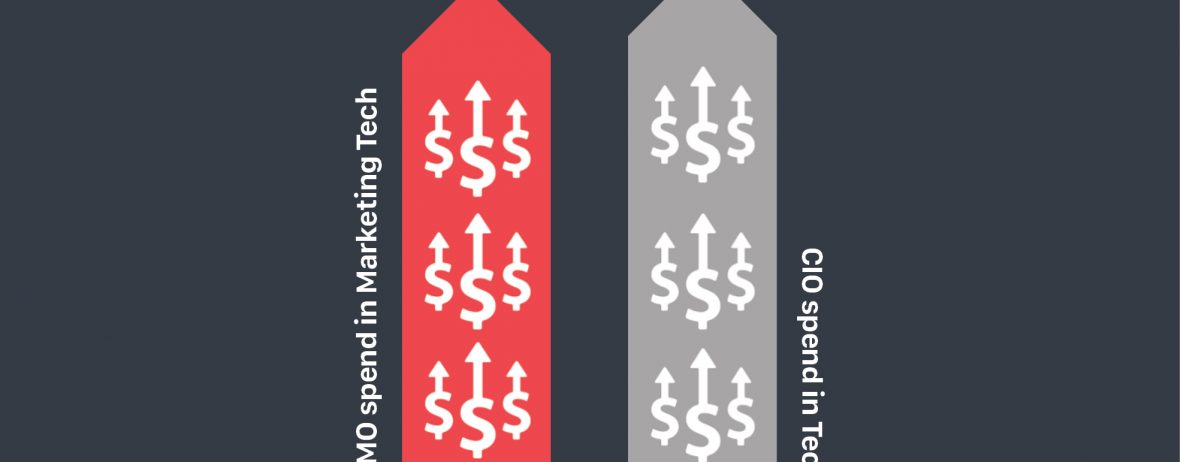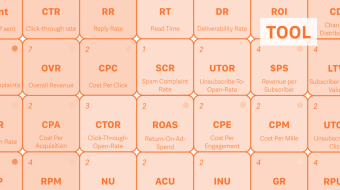If the customer is the king in brand relationships, then it follows that marketing must be a fundamental element of the brand’s strategy and success. CMO’s and marketing teams are beginning to gain momentum within companies and to win a seat at the Board.
However, the CMO’s power comes with responsibilities, especially in terms of revenue and efficiency.
I’ve been working in the field of marketing campaigns and CRM for more than 20 years, and too often have I heard how important it is to measure the ROI of your campaigns, but…. “it was complicated” .… “it was important to be patient” .… “eventually the budget would always come”. Today, we are close to breaking point: 80% of CEOs don’t trust their CMOs, primarily because they don’t know how to precisely measure the impact and the revenue of their actions!
I have good news: today, marketers can take their destiny into their own hands and prove the ROI of their campaigns. The subsequent benefits are huge: better recognition in the company, increased budgets and achieved objectives. Below are three elements I wish to share with you so we can all go forward on the road to ROI.
The budgets in Tech Marketing are heavily growing
Back in 2012, Gartner predicted that in 2017, CMO’s “Marketing Tech’” budget would be higher than CIO’s “Tech” budgets. Of course, at the time it was hard for many to believe it (myself included). Marketing was a know-how field, mainly composed of creativity, campaigns, offers, communication and a bit of tech. Of course, all of this is now in the past. Marketing has gone digital, even within shops. In the end, Gartner was probably right: in 2016 CMOs will have spent in “Marketing Tech” 3.2% of company revenue, whilst CIO “Tech” spending represents 3.4%.
Taking into account that the budget growth of CMOs in 2017 will be 12% (compared to 11% in 2015-2016), it is quite likely the prediction is right. Another interesting learning from this study (Gartner – CMO Spend Survey 2016-2017) is that CMOs declaring to have direct responsibility of a part of the P&L, have marketing budgets 21% higher than the others! Interesting? Yes, but still too uncommon!
Not all CMOs have the ROI culture yet and you can see it!
“Half of my marketing advertising spending is ineffective. My issue is that I don’t know which half”. This quote from John Wanamaker (former US Postmaster General Manager) is more than 100 years old but it still makes us smile because it is accurate.
All of the companies I’ve worked with reflected a growing ROI culture within the digital space: websites, emails etc. However, this culture is very rarely widespread and visible to the Board. The proof? A very interesting study by Fournaise Marketing Group who questioned hundreds of CMOs and CEOs in the world to better understand their relationships and their level of confidence. The results? Astonishing!
(Executive summary available here)
80% of CEOs state that they don’t trust their CMOs to deliver tangible and measured results. On the other hand, 90% of them say they trust their CFOs and CIOs on the same criteria. The study shows that CEOs expect from marketers a state of mind more focused toward the measure of results in terms of sales and financial KPIs, not only “customer engagement”.
Another interesting result: 72% of CEOs say that CMOs regularly ask for budget increase while never being able to prove what that extra budget will bring in terms of increment in sales, revenue, or results.

Want to be ROI focused? Start today!
There’s various areas of marketing that have started to switch into an ROI approach, one of the first being AdTech. I want to share with you my experience in the field of campaign management and marketing agenda optimization. For the past 20 years, I worked for campaign management software vendors but also for clients, managing teams who created and executed the campaigns.
Over the past 15 years, there’s been a large increase of digital communication channels and an explosion in the data available: since then, it has been quite straightforward that optimization efforts have been focused on managing, personalizing, executing and automating coordinated campaigns across multiple channels. Today, what we call marketing campaign management has become a commodity, most companies are equipped.
From that, how is it possible to make the difference and get a competitive advantage? How can you generate and measure an ROI with these CRM campaigns?
It is no longer automation that creates value, it’s intelligent optimization of the entire campaign process. It’s by bringing a layer of intelligence to target, personalize and measure that you will get satisfied customers, an increase in revenue and a proven, tangible ROI.
Tinyclues is one of the major players of this marketing revolution
By applying the power of Deep AI to the world of marketing campaigns, we allow our customers to execute extremely efficient targeting for any of their offers and products, while enabling an intelligent optimization of the marketing agenda. While many marketing innovations focus on the website (recommendations, dynamic personalisation, Web Analytics), Tinyclues brings a layer of Artificial Intelligence to use the full potential of your customer database, enabling marketers to reach customers that match with the offers in their marketing agenda. The stakes are huge: on average, only 1% of a company’s customers visit their website or stores per day. Tinyclues focus on the remaining 99% that are animated through a campaign marketing plan.
Within our 50+ customers, many of them decided to measure the impact Tinyclues has had on their sales and revenue. Some of them set up many A/B tests, comparing campaigns created with Tinyclues against their current campaign process. The results: they all measured a significant increase in the overall CRM campaign revenue, increasing from 30% to more than 200%. The graph above represents a part of those results measured by our clients. The mean is located around 50% increase in revenue. Other customers put in place control groups for several months with interesting results: the additional revenue generated by Tinyclues’ targeting and campaign optimization varied between customers from +1.5% and +8% of global turnover.
So, yes it’s finally possible to innovate and use AI to get a significant increase in revenue on your CRM campaigns. Yes, it’s possible to have a serious ROI approach, allowing to prove the impact on your company financials and there is potential to obtain extra marketing budgets!
Everyone at Tinyclues is passionate about this topic: you can get in touch with me (francois.laxalt@tinyclues.com) or contact one of our Success Managers (success@tinyclues.com) if you’d like to discuss further!






